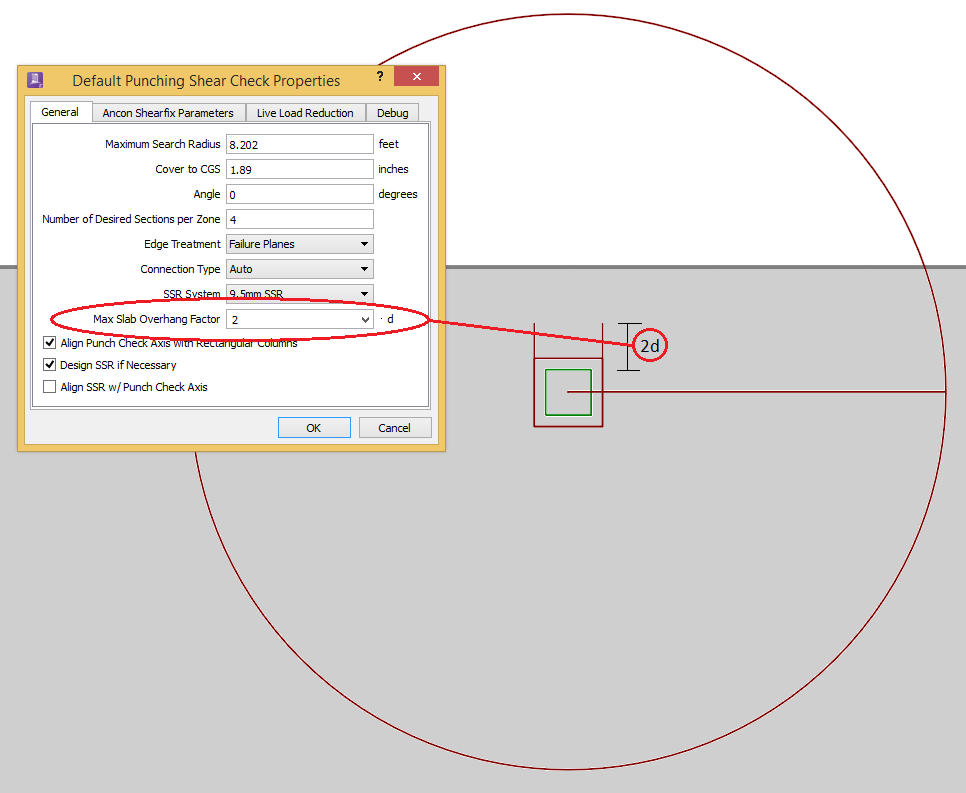General
| Setting | Description |
|---|---|
| Maximum Search Radius | The radius that defines the area RAM Concept searches for potential failure locations. The analysis is conservative when you set a very large radius, but this has two detrimental effects: RAM Concept will need to review a larger area of slab and hence take longer to check that punching location. More importantly, RAM Concept will consider slab openings that are far from the column in determining the potentially critical section that may result in a smaller critical section than is appropriate. |
| Cover to CGS | The distance that will be subtracted from the slab depth in each region to determine the "effective depth" for critical section calculations. For columns under, this is usually the distance from the top of the slab to the bottom of the top bar. RAM Concept subtracts this distance from the slab thickness to determine the "d" distance. If the depth in any region is smaller than the specified Cover to CGS, the region is treated as a hole. |
| Angle | This is the angle of the first ray measured counter-clockwise from the global x-axis. |
| Number of Desired Sections per Zone | A zone can be envisioned as a region outside a column, drop cap, beam, etc. A column connection in a simple plate will have only one zone. A column connection with a drop cap will have multiple zones. This property enables RAM Concept to determine how many sections you want to generate in each of these "zones". This property can be used to eliminate unwanted sections, but caution should be used when reducing the desired number of sections. The sections generated are based upon the minimum critical section cross-sectional area, and they are not actually analyzed until after they are generated. By setting this value to 1 you would be likely to get only the most critical section in each zone but this is not guaranteed. |
| Edge Treatment | This determines how RAM Concept treats edges and openings.
|
| Connection Type | This determines which column classification RAM Concept uses for calculating allowable stresses.
See Column connection type for more information. Note: See specific code sections in Punching Shear Design Notes for rules regarding usage of post-tensioning allowable stress rules.
|
| SSR System | The stud shear reinforcement system used, if required, for design. These systems can be edited on the Materials page. Predefined Ancon Shearfix systems are also available for selection from this drop-down list. |
| Max Overhang Factor | The maximum distance, as a function of effective depth "d", to allow the critical sections to extend from the originating shape (column or SSR group). The sections will be generated without limitation, then trimmed to the specified distance. |
| Align with Rectangular Columns | Aligns the punch check angle with the rectangular column angle during a "calc all". |
| Design SSR if Necessary | Generates an SSR design (if possible) where the unreinforced strength is insufficient. |
| Align SSR w/ Punch Check Axis | Aligns the SSR with the punch check axis. For example, it is intended to be used when the slab edge is not parallel to the column faces and it would be preferable to have the rails align with the slab geometry instead of the column face. |

